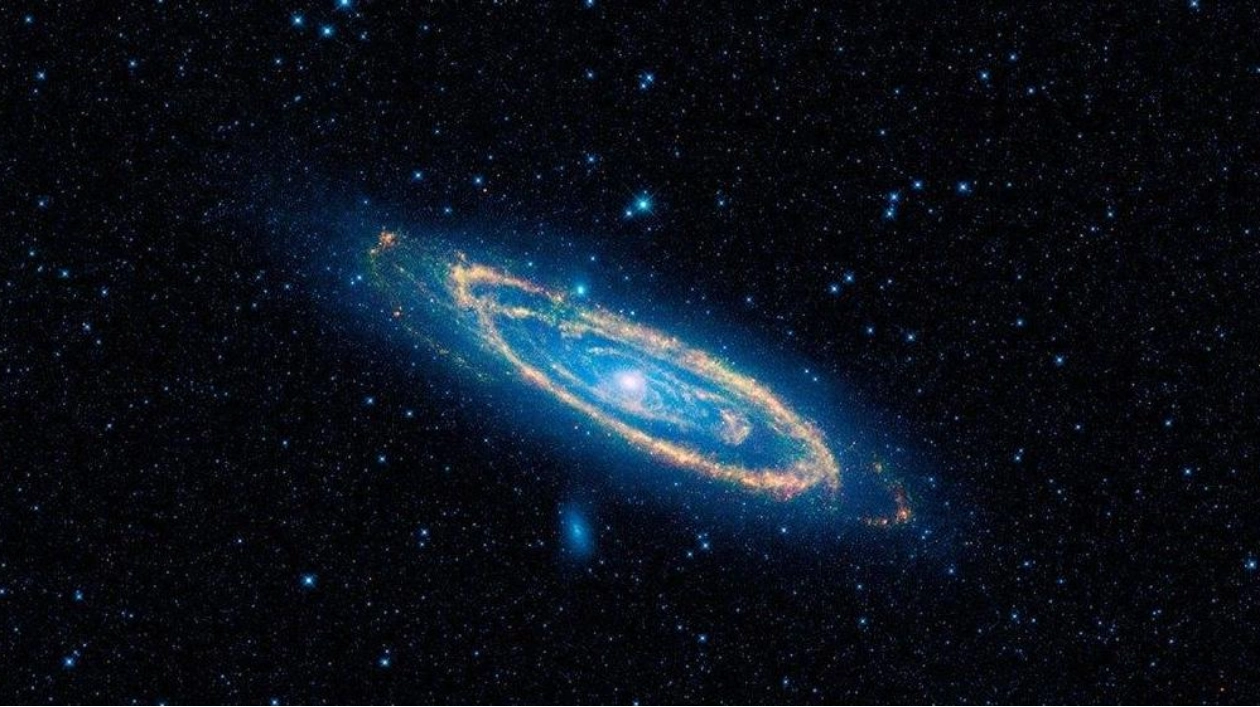Some massive stars might end their lives quietly, without a dramatic explosion. A star that suddenly disappeared from view could be a ‘failed supernova,’ a stellar event that fizzles out instead of fully detonating, according to a new study. If confirmed, this would mark the birth of a black hole. At the end of their lives, massive stars typically explode in spectacular events known as supernovas, triggered by the collapse of the star’s core. However, scientists believe that sometimes, there isn’t enough energy for a full-scale explosion, resulting in a star that simply fades away without any fireworks.
No one has ever definitively detected a failed supernova. But now, a new candidate has emerged. The visible light from a supergiant star in the neighboring Andromeda galaxy began to fade dramatically in 2016 and completely vanished by 2023, as reported by MIT astrophysicist Kishalay De and colleagues in a paper submitted on October 18 to arXiv.org. ‘It’s what you expect from a failed supernova. You have something that’s bright and luminous, looking like a massive star, and then it disappears,’ says astrophysicist Morgan Fraser, who was not involved with the research.
However, the discovery is not yet conclusive. ‘There are many other things that can look similar and mislead you,’ says Fraser, from University College Dublin. For instance, clouds of dust can obscure stars, making them appear dimmer. Another mystery is that scientists expect to see some turbulence from a failed supernova as the star’s outer layers should expand. But De and colleagues saw no visible light show. To explain this, the researchers suggest that the star might have previously lost some of its outer hydrogen envelope. De declined to comment as the study has not yet been peer-reviewed.
In a failed supernova, a star dies without producing an explosion. After the star’s core collapses into a black hole, the remaining material falls into the black hole, producing a glow of infrared light. Conclusively identifying a failed supernova would be a significant astronomical achievement. ‘For the moment, it’s the only feasible way of actually seeing a black hole being formed,’ says astrophysicist Christopher Kochanek of Ohio State University.
Kochanek and colleagues previously reported a possible failed supernova. But scientists are still working to rule out other explanations. Follow-up observations with the James Webb Space Telescope (JWST) showed an infrared glow, which could be emitted by residual matter falling into a newly formed black hole. Alternatively, it could be due to a more common event, such as two stars merging and creating a cloud of dust. Similarly, some infrared glow persisted from the newly vanished star, leaving it uncertain whether it’s a failed supernova or not. ‘With the sparse observations we have, it’s very difficult to tell the difference,’ says astrophysicist Griffin Hosseinzadeh of the University of California, San Diego, who was not involved with the research.
Additional data from JWST could help determine the origins of both purported failed supernovas. Scientists could also look for X-rays, which could be produced if there’s a black hole swallowing matter. Understanding how stars die is crucial for determining how galaxies acquire their populations of black holes and neutron stars, the ultradense remnants left behind by successful supernovas. It’s also important for understanding how the chemical elements formed in stars are dispersed throughout the cosmos.
Ultimately, scientists hope to predict the ultimate fate of a star. ‘What we’d like to know is, as a function of the mass of the star when it’s born, is it going to be a supernova and make a neutron star, or is it going to be a failure and make a black hole?’ says astrophysicist Stanford Woosley of the University of California, Santa Cruz, who was not involved with the research. ‘The whole idea of black hole birth, and what it looks like and what different masses of stars produce, are critical issues.’
Source link: https://www.sciencenews.org






